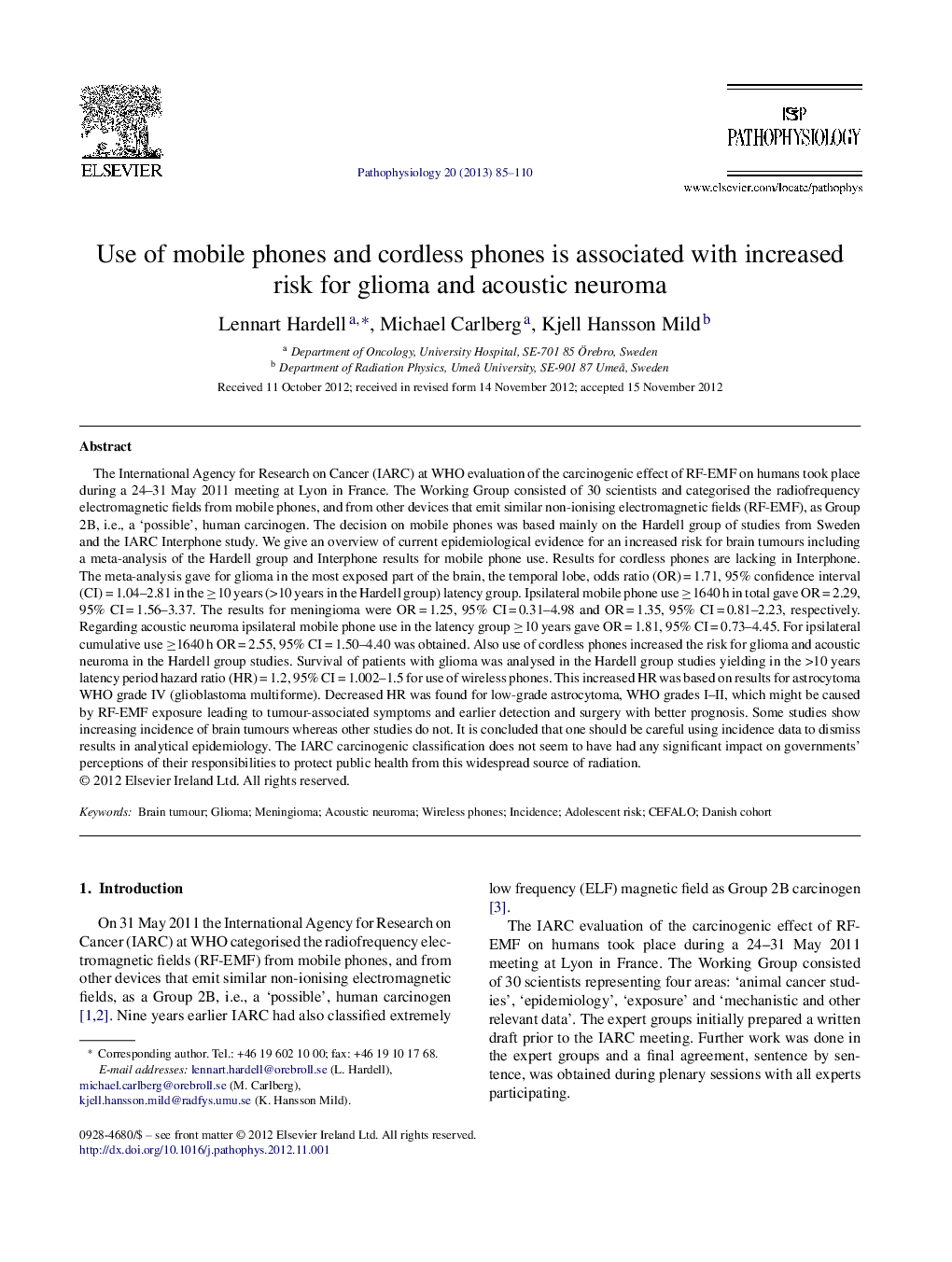| Article ID | Journal | Published Year | Pages | File Type |
|---|---|---|---|---|
| 4137145 | Pathophysiology | 2013 | 26 Pages |
The International Agency for Research on Cancer (IARC) at WHO evaluation of the carcinogenic effect of RF-EMF on humans took place during a 24–31 May 2011 meeting at Lyon in France. The Working Group consisted of 30 scientists and categorised the radiofrequency electromagnetic fields from mobile phones, and from other devices that emit similar non-ionising electromagnetic fields (RF-EMF), as Group 2B, i.e., a ‘possible’, human carcinogen. The decision on mobile phones was based mainly on the Hardell group of studies from Sweden and the IARC Interphone study. We give an overview of current epidemiological evidence for an increased risk for brain tumours including a meta-analysis of the Hardell group and Interphone results for mobile phone use. Results for cordless phones are lacking in Interphone. The meta-analysis gave for glioma in the most exposed part of the brain, the temporal lobe, odds ratio (OR) = 1.71, 95% confidence interval (CI) = 1.04–2.81 in the ≥10 years (>10 years in the Hardell group) latency group. Ipsilateral mobile phone use ≥1640 h in total gave OR = 2.29, 95% CI = 1.56–3.37. The results for meningioma were OR = 1.25, 95% CI = 0.31–4.98 and OR = 1.35, 95% CI = 0.81–2.23, respectively. Regarding acoustic neuroma ipsilateral mobile phone use in the latency group ≥10 years gave OR = 1.81, 95% CI = 0.73–4.45. For ipsilateral cumulative use ≥1640 h OR = 2.55, 95% CI = 1.50–4.40 was obtained. Also use of cordless phones increased the risk for glioma and acoustic neuroma in the Hardell group studies. Survival of patients with glioma was analysed in the Hardell group studies yielding in the >10 years latency period hazard ratio (HR) = 1.2, 95% CI = 1.002–1.5 for use of wireless phones. This increased HR was based on results for astrocytoma WHO grade IV (glioblastoma multiforme). Decreased HR was found for low-grade astrocytoma, WHO grades I–II, which might be caused by RF-EMF exposure leading to tumour-associated symptoms and earlier detection and surgery with better prognosis. Some studies show increasing incidence of brain tumours whereas other studies do not. It is concluded that one should be careful using incidence data to dismiss results in analytical epidemiology. The IARC carcinogenic classification does not seem to have had any significant impact on governments’ perceptions of their responsibilities to protect public health from this widespread source of radiation.
► In May 2011 radiofrequency electromagnetic fields from mobile phones were categorised as Group 2B, ‘possible’, human carcinogen by IARC at WHO. ► The IARC decision on mobile phones was based mainly on case-control studies from the Hardell group in Sweden and the IARC Interphone study. ► This article gives a comprehensive up-to-date review of the association between use of mobile and cordless phones and brain tumours. ► There is a consistent pattern of increased risk for glioma and acoustic neuroma associated with use of wireless phones. ► The current safety limits and reference levels are not adequate to protect public health and new public health standards and limits are needed.
